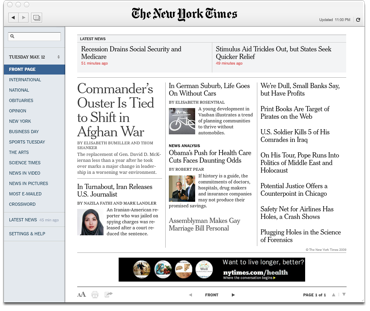The title of this post is the motto of Horace Mann, the high school I attended. The cover article of this week’s New York Times Magazine is a collection of stories of sexual abuse by teachers of students at the school, largely from around the time I was there. I knew all the teachers mentioned by name in the story and could recognize at least a few of the students involved.
My first reaction to the story, in an email to a friend, was “Amazing how clueless I was.” But that’s not quite right – I wasn’t as unaware as I wish I could claim in retrospect. For example, I had been on the trip where the incident which lead to Stan Kops’s firing occurred and had heard pretty concrete rumors about his firing. I definitely knew the stories and jokes about Joe “Clutch & Touch” Klein the driving teacher, which surfaced in another story. I think I’d also heard rumors about Mark Wright, but he was fired when I was in seventh grade (when he had been my art teacher), so I’m not sure I’d have understood the details, had I heard any.
The surprise in the article, for me and many others, are the apparently well-confirmed stories of Johannes Somary. I was never in Glee Club – anyone who’s heard me sing will know that – but many of my friends were. And many absolutely worshipped Somary. I was friends with one of his sons and fondly remember playing poker at their house. In this case, though, I was totally clueless. No rumors at all. Stories of the great man’s talent, his ego, his wealth, his eccentricities, even of the girls with crushes on him, but not a whiff of anything like predation. His story makes this scandal feel far more intimately bound up with the school than the others.
The Times article is upsetting and valuable, but is also quite odd. Hints are dropped about Inslee Clark, blaming him by innuendo for an environment of sexual abuse, but without the author actually saying so. The quantity of semi-anonymous sources seems exceptional outside of national security stories. While one paragraph mentions other schools, there’s very little in the way of comparisons or context. I’ve never seen a Times article explicitly name its editor before, but this one does; in this case, it’s another Horace Mann graduate (and, I should add, someone I both respect and have a lot of indirect connections to). But there are a lot of Horace Mann alumni who now work for the Times and that leaves the feeling that this story got special handling. To what effect? Is it gentler than it otherwise would have been? More prominent? As an outsider, I can’t tell.
On the other hand, the school’s reaction to this article is, to say the least, off-putting. It is the worst kind of bland, institutional damage control, hiding behind policies that make the Catholic Church look forthcoming. The school admits in weasely terms that it’s fired faculty for these kinds of accusations, but seems to make it clear that it hushed everything up. Yes, thank you for pointing out there’s a national hotline for abuse, but actually saying you’ll give information about crimes to prosecutors would be a better acknowledgement of the school’s responsibility.
Horace Mann, when I knew it, provided a great education. I’ve benefited tremendously from it; I’ve long said that my experience there had much more impact on me than college did. But it did so in an environment that seemed consciously envious of the traditions – the trivial, the honorable, and the sadistic – of English public schools. When I attended, students were mostly called by their first names, but it wasn’t many years before that they were all “Mr.” to the faculty. Academic standards were high. Teachers that verbally abused students were common. It is very sad that Inslee Clark, who probably did more than anyone else to bring the school into the modern world, is being tarred for hushing up or contributing to an abuse problem. How much was his fault? What did he know and what did he do? I wonder if anyone alive can say.
(I mostly knew Clark from taking a Kennedy Years elective he taught. He’d been inspired by John and Bobby Kennedy; the class reflected his continuing belief in the optimism of the New Frontier. But I also knew the stories of his drinking. Looking back, I could see that he drew energy from teaching and from baseball, but the rest of the time he seemed fatigued, distractible, and mired in depression.)
Conflated with all this – especially given the article’s focus on abuse of boys by male teachers – is the homophobia of the time. By the time we were in the upper school, we all knew that Inky Clark and Stan Kops were gay, but we snickered about it; back then, no students were out of the closet and open empathy for a gay teacher was difficult for high school students. (Not impossible – our much-beloved and untarnished-by-any-scandal theater teacher was very out of the closet.) Did homophobia make it harder for the school to acknowledge the problem? Are the abuse cases of young girls still hushed up, even more difficult to talk about? Or are they just not as newsworthy?
There are many tragedies here. The article discusses at least two suicides and the deaths of a few men who were broken, shadows of their original promise. The abuse, even when the victims recovered, was traumatic. And the school, when it acted to remove predators, apparently did nothing to prevent similar abuse happening somewhere else.
What I’m left with is a feeling that we all find it easy to turn away, willing to find some excuse not to see something so difficult. Does the truth prevail? Sometimes. And sometimes only when it’s too late.

